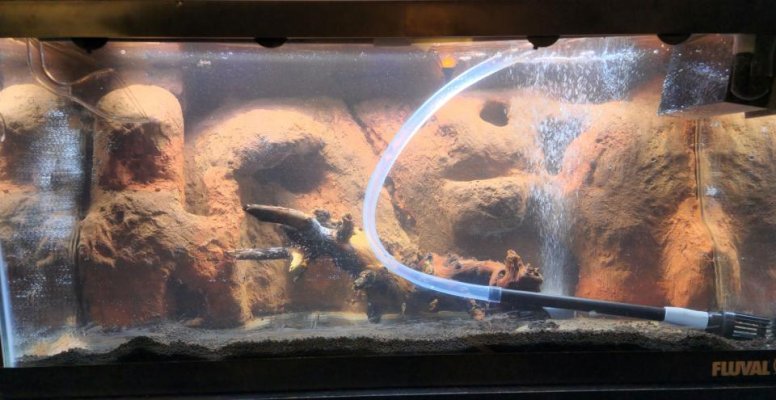But you would still have the issue of the filter and pump working at different rates. One or the other tank would overflow. Or the canister would end up running dry and that would burn out the impeller pretty quickly.
I think andy was suggesting you set up the tanks as a traditional main tank and sump with overflow and return pump, and if you wanted the cannister to provide your filtration set it up separately to one or the the other of the tanks.
Sorry, im not great at explaining what i see as the issue.
Ooooooooh. Ok, I completely missed/misunderstood that part! That would actually simplify the setup immsensely and I'd still get to use my glass inflow and outflow! I'll have to do some additional thinking but I think that would work just fine.
Thank you!

 I may just set up the main tank with the filter and get it cycling since everything else is ready to go now and just get the sump all set up on a future date
I may just set up the main tank with the filter and get it cycling since everything else is ready to go now and just get the sump all set up on a future date 